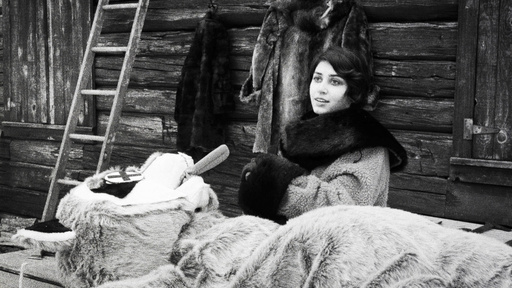
NEW YORK — The indie film “Hundreds of Beavers” has emerged as a cult favorite, despite its humble beginnings. Directed by Mike Cheslik, this microbudget production, which cost just $150,000 to make and was self-distributed, has carved out a unique niche in an industry often overshadowed by big-budget franchises.
“Hundreds of Beavers” is a black-and-white, dialogue-free adventure featuring a 19th-century applejack salesman, portrayed by Ryland Tews, facing off against a horde of beavers, portrayed by actors in whimsical mascot costumes. Since its debut in January, the film has been screened in at least one theater weekly, and on Dec. 5 seeks to expand its reach more than ever.
The journey to this point has not been overnight. It was two years ago when Cheslik first showcased “Hundreds of Beavers.” Its origin can be traced back to a bar conversation in October 2018. Cheslik and Tews, who met as teenagers in Wisconsin, were brainstorming how to build upon their previous project, “Lake Michigan Monster,” an even more shoestring budget B-movie that revolved around hunting a mythical creature in the Great Lakes. This past project laid the groundwork for a more ambitious animated sequence that Cheslik envisioned for their next film.
Cheslik sought to create a film reminiscent of childhood experiences filled with snowball fights and sledding, highlighted by the use of mascot costumes, which Tews humorously noted as universally appealing due to their comical falls. “Slapstick is a genre that had been understated for too long,” Cheslik remarked, suggesting that societal shifts toward more verbal humor have pushed physical comedy to the sidelines.
Filming took place over two winter seasons amid the challenges of the pandemic, with some reshoots sprinkled in. While battling extremely cold temperatures and trudging through snow to set up their equipment was no easy task, they remained committed to producing the film they truly wanted to make, staying firmly outside the conventional styles found in mainstream cinemas.
During the making of “Hundreds of Beavers,” the duo often expressed frustration with other films. “For six continuous years, I think we just complained,” Cheslik reflected. In their discussions, they emphasized that filmmaking doesn’t inherently need high-end equipment—something they stand by as the two do not consider themselves gear enthusiasts. They push the idea that “shapes are free” and that effective visuals can be achieved without expensive technology.
In the editing room, Cheslik focused on enhancing these basic shapes, creating a whimsical display of contrasting shadows and humor, with the few beavers animated by duplicating the handful of performers who donned the costumes. Cheslik jokingly explained the technical maneuvers used to achieve visuals of multiple beavers in a single shot.
When the film was finally completed, Cheslik and Tews eagerly embarked on the festival circuit, premiering at Fantastic Fest and continuing to gain exposure through various other festivals. Although audience reactions were enthusiastic, no substantial offers materialized—highlighting the drastic changes in how films are marketed today.
“We realized that just creating the movie was merely the starting point,” said Tews. This prompted producer Kurt Ravenwood to propose a self-release model, opting to maintain the film’s theatrical, merchandising, and Blu-ray rights while selling streaming rights to a distributor known for other indie hits. “It was a strategic gamble,” Ravenwood admitted, acknowledging their lack of experience in orchestrating theatrical runs but trusting that strong attendance could lead to success.
With a seasoned distribution expert and publicist on board, they took a leap of faith. “Indie films should not just disappear into the abyss of streaming platforms,” Ravenwood declared, emphasizing the importance of creating an engaging experience around the film. Thus, they initiated the “Great Lakes Roadshow,” screening “Hundreds of Beavers” in various Midwest theaters, accompanying each showing with lively performances featuring the beaver mascot costumes.
As their efforts gained traction, the audience response surged, leading to a phenomenon they dubbed “beaver fever.” However, the path did not unfold effortlessly. From shipping posters to promoting in multiple locations, Cheslik and Tews spent two years navigating the release process. Looking back, Cheslik noted the monumental nature of achieving this career milestone, although he jokingly expressed the challenges involved in such accomplishments.
Now, with notecards of ideas for their next project hanging nearby, Cheslik confirmed that their upcoming work will continue to showcase physical comedy, much like “Hundreds of Beavers.” As for the beaver suits, he mused about their deteriorating condition after enduring numerous harsh winters, countless festivals, and numerous roadshow events.
Looking ahead, both he and Tews remain hopeful that their next venture will strike a better balance between creative fulfillment and the commercial aspect of filmmaking. “It’s frustrating when people say their sole goal is to get the film out there, ignoring the financial realities,” Cheslik concluded, challenging the notion that films can merely be vanity projects in an industry rich with potential.
